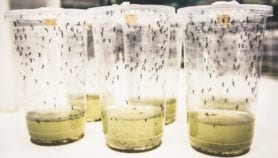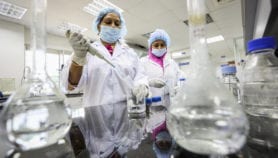By: Maina Waruru
Send to a friend
The details you provide on this page will not be used to send unsolicited email, and will not be sold to a 3rd party. See privacy policy.
[NAIROBI] A devastating disease of coffee plants that may have cost East African farmers as much as US$1 billion over the last ten years could be brought back under control after the rapid development of resistant varieties.
The disease — coffee wilt — is caused by a fungus and is present in the Democratic Republic of Congo (DRC), Ethiopia, Tanzania and Uganda.
It is not only lethal but also leaves the soil infected for many months and is the "largest single natural disaster ever to affect African coffee", according to CABI, a not-for-profit agricultural organisation.
Scientists in Uganda released results this month (14 December) of a project in which they developed several resistant varieties of the coffee plant. Their results are described in a report of CABI's seven-year study of the disease.
With the disease threatening to spread to West Africa from DRC, and to Kenya from Ethiopia, the new varieties could be rolled out to farmers as early as next year.
Georgina Hakiza, head of the coffee wilt disease programme at the Coffee Research Institute in Uganda said that despite the considerable effort spent on the new varieties, their mass production will be cheap as they are made from cuttings from mother plants (known as clones).
She added that the spread of the disease had also slowed recently because the researchers have educated farmers on control and prevention measures.
The CABI study has revealed that there are two forms of the disease, one attacking the Robusta coffee variety — the target of the Ugandan clone — and the other, found only in Ethiopia, attacking Arabica.
To control disease spread CABI is recommending quarantine, uprooting and burning of infected plant material, and leaving infected soils for at least a year before replanting.
It is also calling for more research to protect Arabica coffee in Kenya from the disease.
The disease was brought under control in the 1950s only to re-emerge in the 1990s, partly because of the situation in DRC.
"Conflict in the DRC weakened the country's economy and coffee research was not spared, paving the way for return of the disease," said Noah Phiri, a senior plant pathologist at CABI in Nairobi and co-author of the report.
Refugees from the war in DRC then spread the disease, which clings to soil.
CABI's study involved scientists from Belgium, France, the United Kingdom and seven East African countries. It was funded by the Common Fund for Commodities, the European Union and the UK's Department for International Development.













